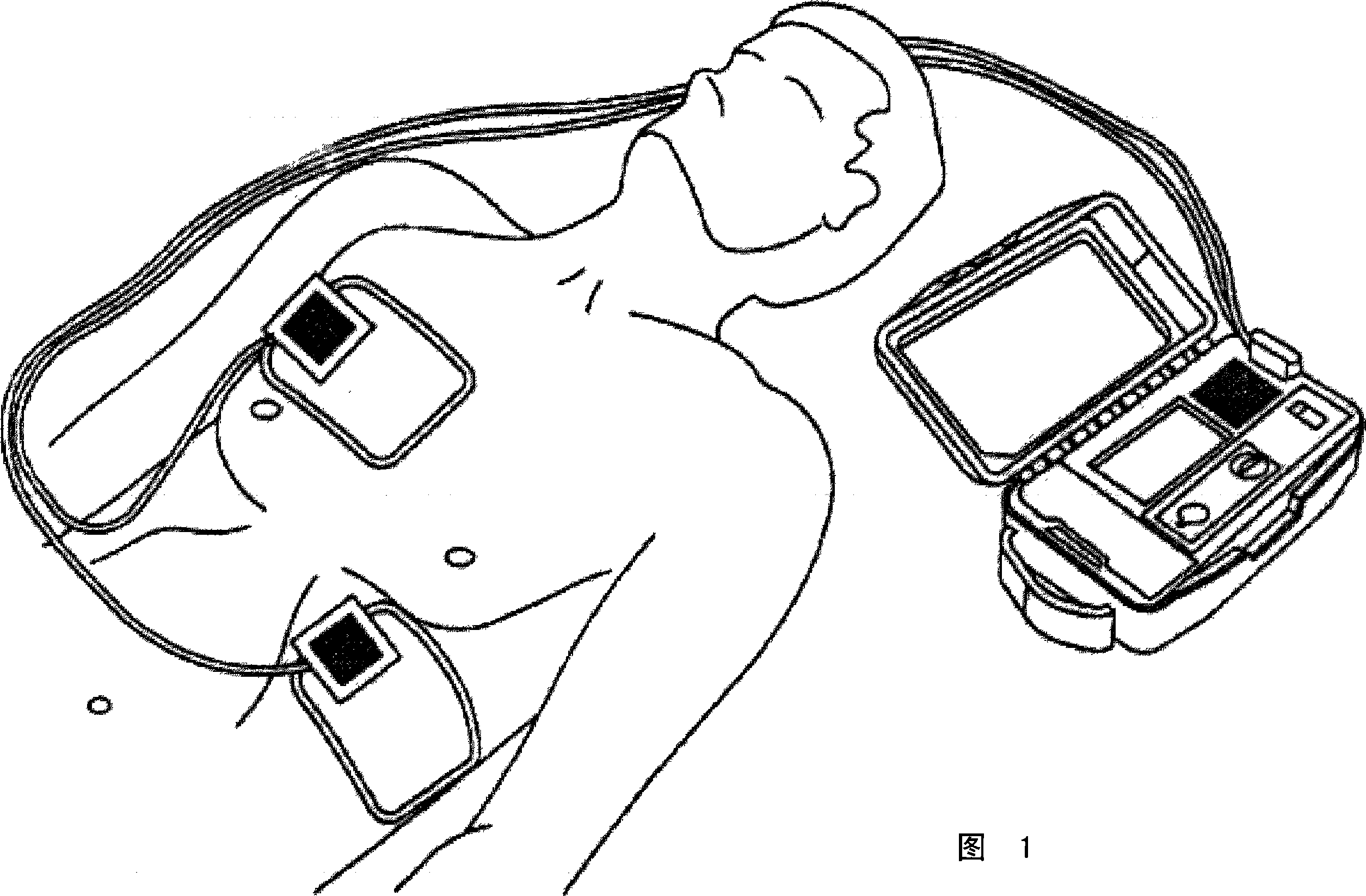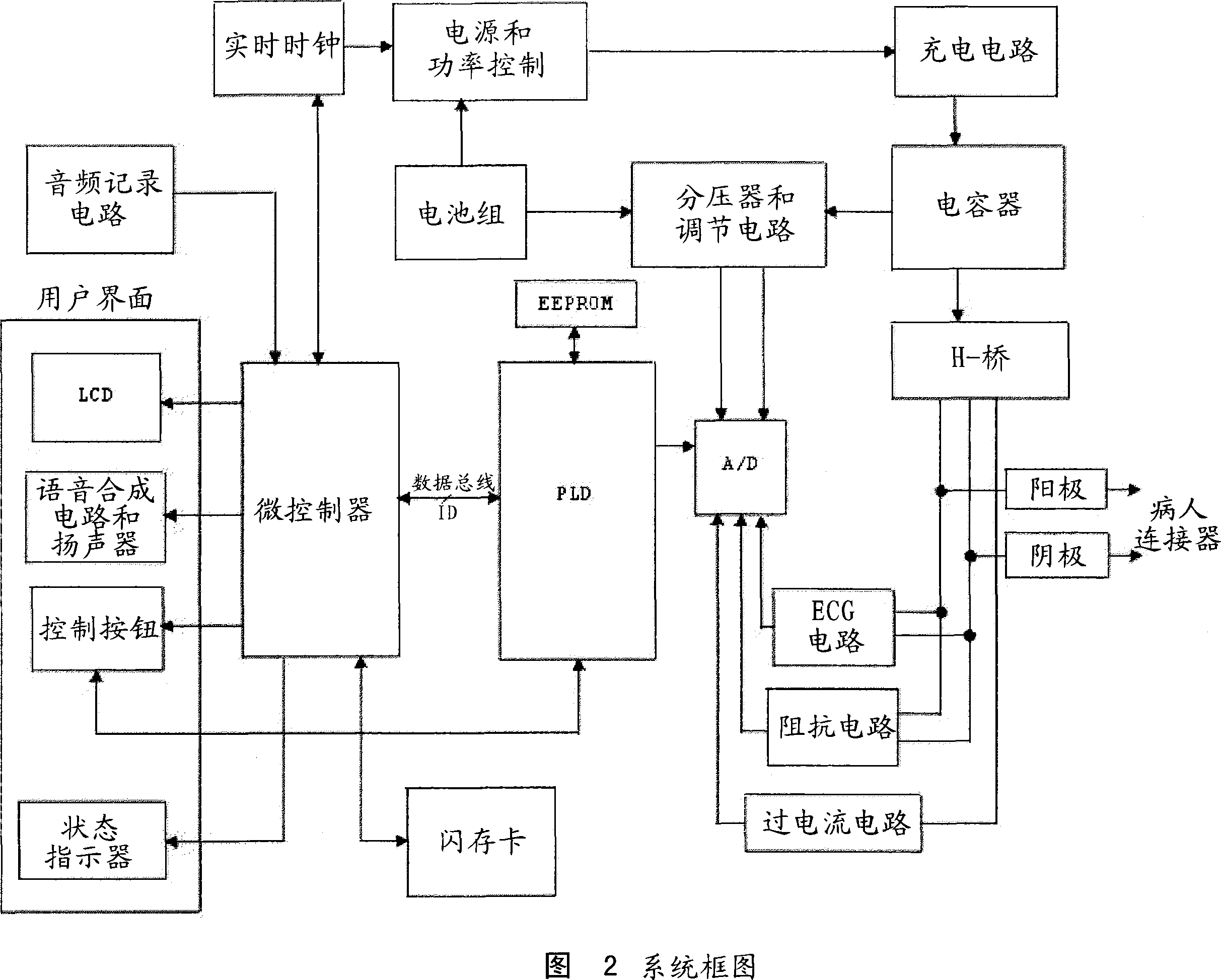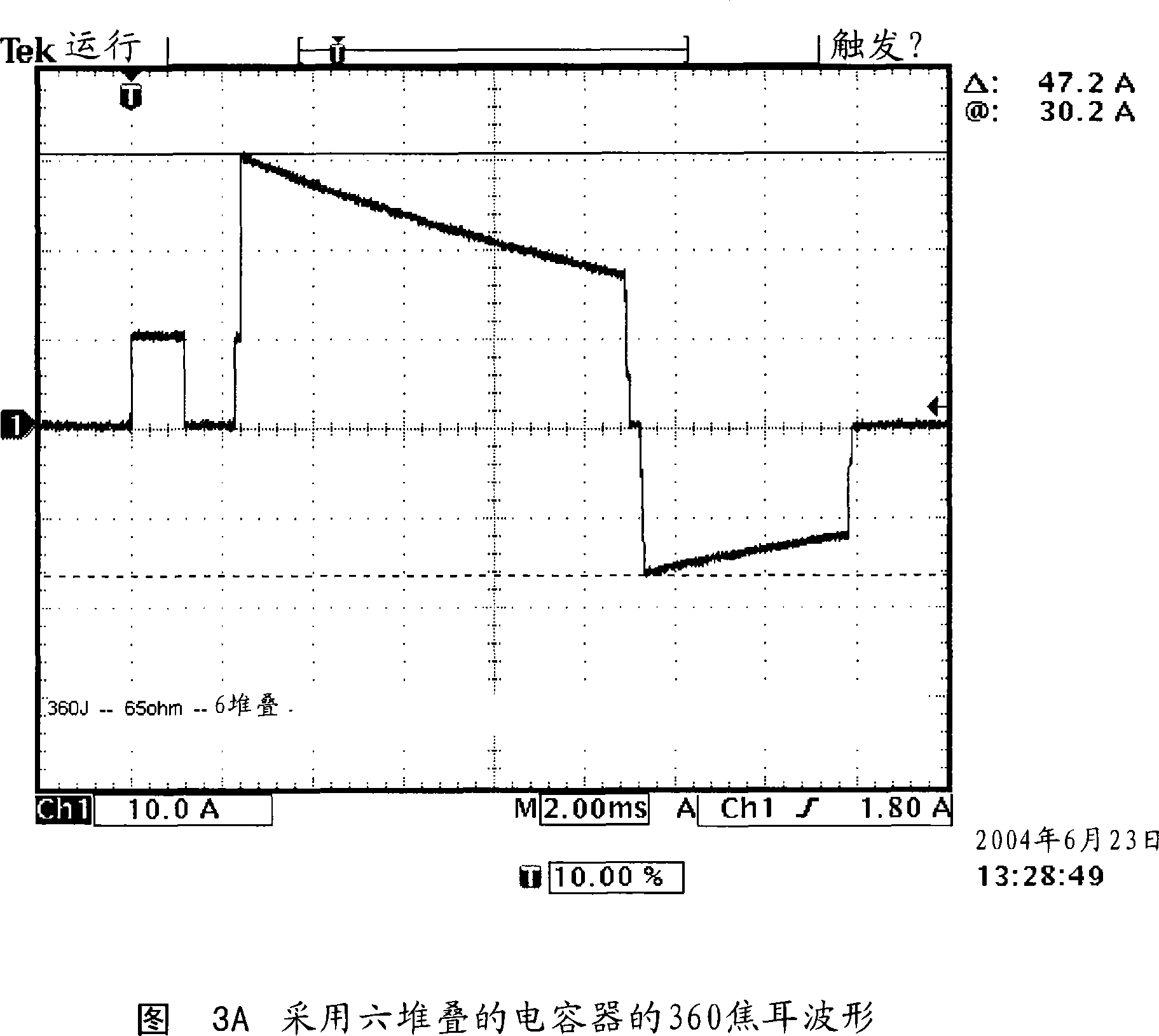Automated external defibrillator (aed) with discrete sensing pulse for use in configuring a therapeutic biphasic waveform
A defibrillator and waveform technology, used in cardiac defibrillators, therapy, electrotherapy, etc., can solve problems such as myocardial damage, increase the complexity of waveform controllers, and not control or limit the peak current of patients
- Summary
- Abstract
- Description
- Claims
- Application Information
AI Technical Summary
Problems solved by technology
Method used
Image
Examples
Embodiment Construction
[0045] The present invention is a system and method for generating discrete sense pulses used in forming therapeutic biphasic waveforms.
[0046] As shown in Figure 1, the patient is connected to the AED through a pair of electrodes attached directly to the skin on the patient's chest. A defibrillator uses electrodes to deliver a defibrillating shock to a patient as pulses of current flow through the patient's heart. The AED also first senses ECG signals from the patient using electrodes to determine the state of the patient's heart (ie, whether it is shockable). The electrodes contain conductive hydrogel, which secures the pads to the patient's skin and provides good electrical conductivity. The electrodes are terminated with a connector which is usually connected to the defibrillator after the pads have been applied to the patient.
[0047] In a preferred embodiment of the invention, the electrodes are sealed in a tray located within the cover of the AED unit. Electrodes ar...
PUM
 Login to View More
Login to View More Abstract
Description
Claims
Application Information
 Login to View More
Login to View More - R&D
- Intellectual Property
- Life Sciences
- Materials
- Tech Scout
- Unparalleled Data Quality
- Higher Quality Content
- 60% Fewer Hallucinations
Browse by: Latest US Patents, China's latest patents, Technical Efficacy Thesaurus, Application Domain, Technology Topic, Popular Technical Reports.
© 2025 PatSnap. All rights reserved.Legal|Privacy policy|Modern Slavery Act Transparency Statement|Sitemap|About US| Contact US: help@patsnap.com



